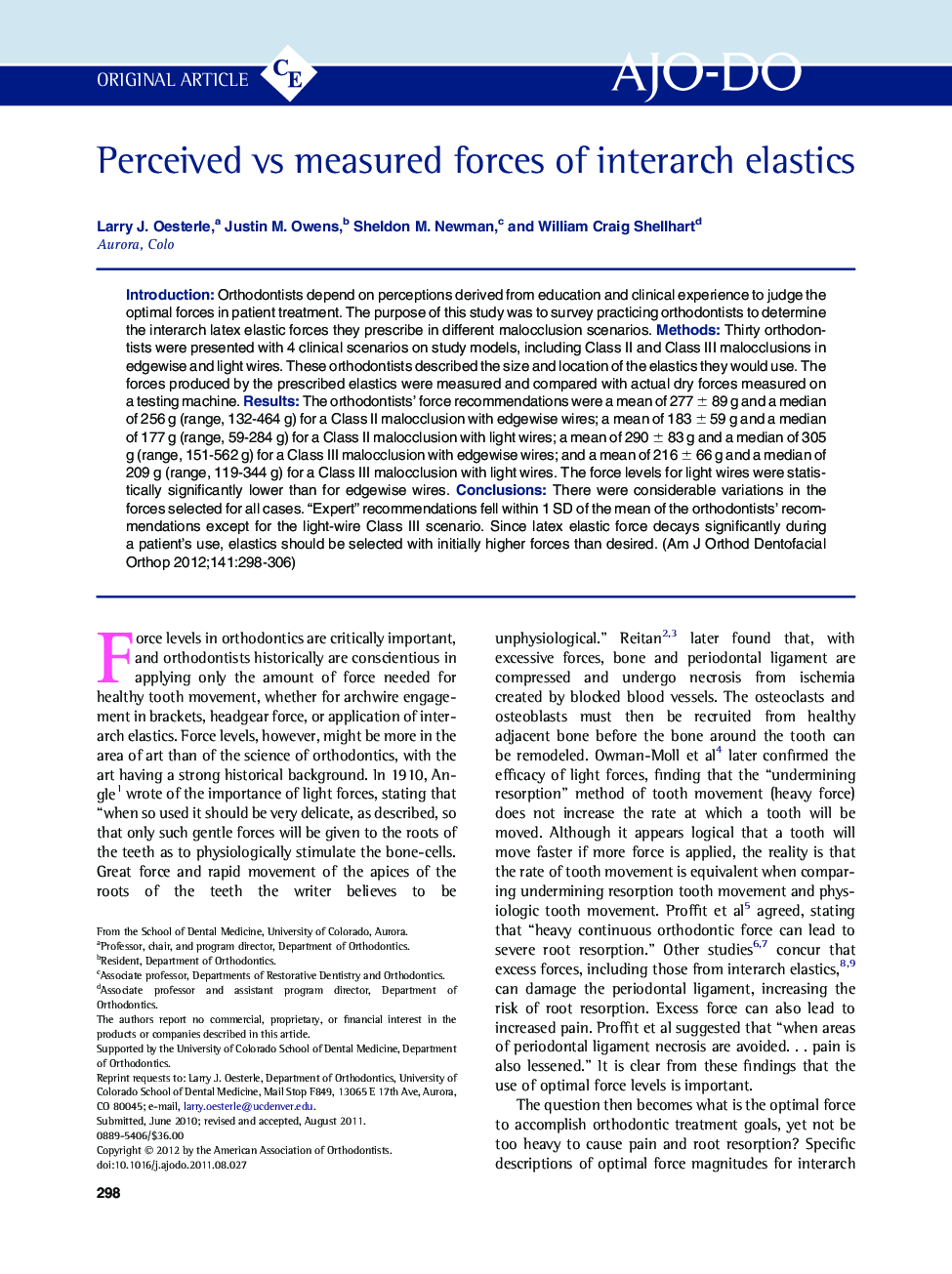| Article ID | Journal | Published Year | Pages | File Type |
|---|---|---|---|---|
| 3117878 | American Journal of Orthodontics and Dentofacial Orthopedics | 2012 | 9 Pages |
IntroductionOrthodontists depend on perceptions derived from education and clinical experience to judge the optimal forces in patient treatment. The purpose of this study was to survey practicing orthodontists to determine the interarch latex elastic forces they prescribe in different malocclusion scenarios.MethodsThirty orthodontists were presented with 4 clinical scenarios on study models, including Class II and Class III malocclusions in edgewise and light wires. These orthodontists described the size and location of the elastics they would use. The forces produced by the prescribed elastics were measured and compared with actual dry forces measured on a testing machine.ResultsThe orthodontists’ force recommendations were a mean of 277 ± 89 g and a median of 256 g (range, 132-464 g) for a Class II malocclusion with edgewise wires; a mean of 183 ± 59 g and a median of 177 g (range, 59-284 g) for a Class II malocclusion with light wires; a mean of 290 ± 83 g and a median of 305 g (range, 151-562 g) for a Class III malocclusion with edgewise wires; and a mean of 216 ± 66 g and a median of 209 g (range, 119-344 g) for a Class III malocclusion with light wires. The force levels for light wires were statistically significantly lower than for edgewise wires.ConclusionsThere were considerable variations in the forces selected for all cases. “Expert” recommendations fell within 1 SD of the mean of the orthodontists’ recommendations except for the light-wire Class III scenario. Since latex elastic force decays significantly during a patient’s use, elastics should be selected with initially higher forces than desired.
